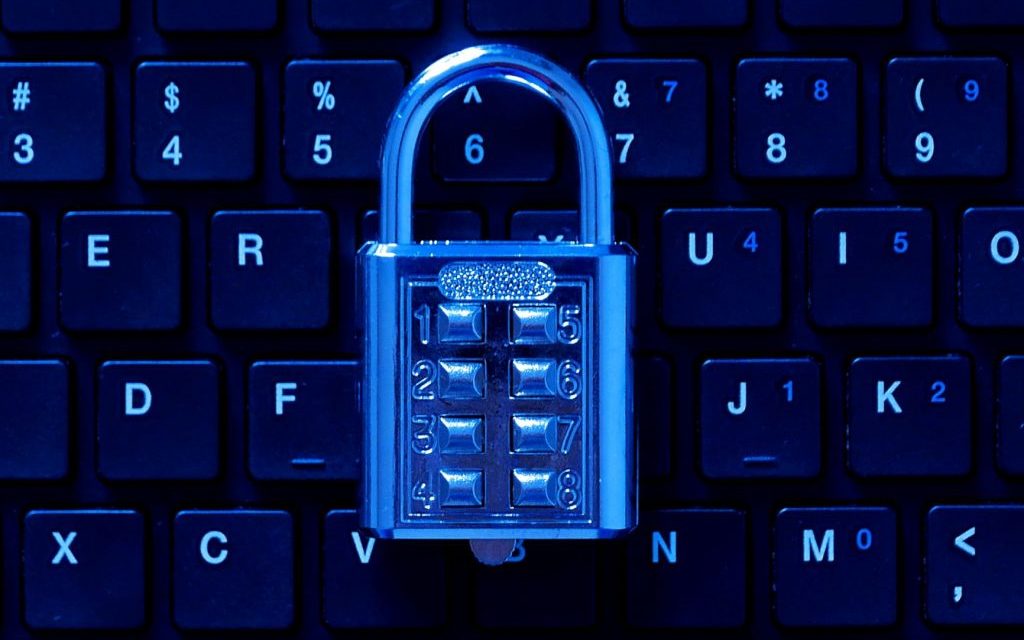In recent years, working remotely has grown in popularity as a way to achieve a better work/life balance, increase productivity and minimize overhead costs. But with the advent of COVID-19, remote work quickly became a necessity, causing many companies to improvise policies and security protocols while facing the reality of a global pandemic. Even with established physical information policies and network security systems, many businesses simply were not prepared for the risks involved with remote work – and many are still struggling.
The fact of the matter is that all companies, regardless of size, are at risk for a serious security breach when employees work remotely for an extended period of time. There must be checks and balances in place that address the information security challenges that remote workers face while also keeping confidential data secure.
Information Security Challenges for Remote Workers
There are three common challenges that organizations are facing as they transition their employees to a remote workforce:
- Lack of security awareness and responsibility: With many employees working from the comfort of their home offices, which, for some, might resemble a kitchen table, living room couch or a corner of the playroom, the responsibility of information security has shifted from the organization to the remote worker and they may not even be aware. Removed from their familiar office environment, employees must now champion their own security without the backing of trusted solutions that keep threats at bay, like network security or an office shredding program. The ideal goal of security being everyone’s responsibility can be difficult to implement in a work from home situation, despite the heightened risks due to environment.
- Increased susceptibility of human error and phishing attacks: Human error is inevitable in the workplace, but when it occurs inside the home office, the consequences can be more serious. Simple mistakes like placing confidential material in the recycling bin or using an unsecured network to access information can cause private data to fall into the wrong hands. There are also more distractions in the home, which can result in employees being less vigilant of online phishing scams, which have increased since the start of the pandemic.
- Differing security concerns and protocols: When you remove the working environment from the safe confines of the corporate security bubble, a whole new set of security concerns and questions emerge. Protocols that work seamlessly in the physical office space, like paper document and hard drive destruction, data management and network security, are not as easily replicated in the home office unless there are well-defined remote workplace policies and procedures in place.
Best Practices for Employees that Work Remotely
With these three challenges in mind, there are several important best practices that your organization should implement to ensure a secure remote workforce.
1. Establish remote working guidelines
Developing clear information security guidelines can help remote employees understand the risks of the home office environment and learn how to protect themselves and their data. Guidelines should include how to safely access, share and save confidential information, as well as approved destruction methods and requirements. When creating a policy, engage senior management to encourage the adoption and compliance of established remote work guidelines.
2. Provide employees with remote work information safety training
Once your remote working guidelines are developed, it is important to follow-up the document with a formal, company-wide communication plan to all employees. The communication plan should include both written communication and a virtual walk-through of what is expected. Reminders and followups should be sent on a regular basis to keep it top-of-mind. For many people, this is their first time working from home for an extended period of time. Even seasoned remote employees have had to adjust to a new reality that is far from normal. Proper training will ensure that rookie and veteran remote workers learn how to maintain security as per company protocols and effectively respond to an information security breach, should one occur.
3. Limit remote access to confidential data
Providing limited remote access to confidential and sensitive data on a need-to-know basis can limit security risks and prevent a serious security breach from occurring when working away from the office. Be proactive and keep a record of which employees have remote access to certain information and revoke access upon project completion, job changes or when the data is no longer required.
4. Use online-based tools and platforms for employees
Whether working from the office or another location, businesses should identify a core set of tools to empower employees to collaborate, share and use information through secure channels. Tools can include remote access file sharing, project tracking, chat functionality, video conferencing and other supports to achieve business objectives. Once identified, these chosen online platforms should become the primary way employees connect and carry out work tasks, while also keeping confidential information safe.
5. Store and secure confidential information to limit access
Paperwork can be hard to keep track of, especially when working remotely. Instead of filing papers in piles where they can be easily accessed by others, encourage employees to store them in a locked cabinet with laptops, USB sticks and external hard drives to keep information secure.
6. Implement a shred-all policy for employees that work remotely
Implementing a shred-all strategy for employees that work from home can dramatically reduce the risk of a security breach and improve compliance. The policy should mandate the shredding of all forms of confidential data, including paper, hard drives or other media, and it should be carried out by a professional service provider. Many remote workers do not have access to locked consoles, encourage all employees to consolidate paperwork in a locked cabinet or, or bag until it can be returned to the office to be securely disposed of. If an employee generates a lot of paper, shredding companies can provide locked consoles in the home that can be serviced on a regular basis. Another alternative is identifying secure drop-off locations that employees can access for secure document shredding by an approved service provider.
7. Develop a printing policy with follow-through
Encourage employees working remotely to refrain from printing records and documents, especially on shared printers. In circumstances where it is unavoidable, outline what remote workers need to do to keep the physical paper documents safe and how to properly dispose of them.
8. Treat the home office as an extension of the physical office location
When working remotely in the comforts of home, it is easier to let one’s guard down. Encourage employees to treat their at-home workspace as an extension of the office by following safety and security protocols. This includes best practices like keeping doors and windows locked, using headphones during conference calls, never leaving laptops unattended or in a vehicle, connecting to secure networks, and properly destroying physical and electronic data. Company-issued electronics should never be shared with friends, family or business associates and login and password information must also be kept confidential.
9. Keep personal work separate from business devices
Non-work-related internet activity reduces an employee’s productivity, but it is also a key driver that can invite serious security threats. Encourage remote employees to always carry out personal business on personal devices and only use company-issued laptops and electronics for business-related activities. Techniques, like application whitelisting, can also be used to control which applications and software are approved to run on corporate devices.
10. Complete software and security updates often
Staying on top of software updates ensures that company-issued and personal devices are equipped with the latest features and security measures. To make sure that updates happen on-time and regularly, turn on automatic software updates on all devices for the latest operating system and best security performance.
11. Use the latest safeguarding technologies
Make sure all work devices, files and connections are protected with a secure password and that all security settings and firewalls are engaged. You should also require that all employees working remotely use encrypted password software to facilitate password safety and institute a system of frequent, forced password changes as an extra safety measure. Make sure all company-issued devices use up-to-date anti-malware and anti-virus software as well.
12. Protect sensitive information with a data encryption process
When remote employees must share highly-sensitive information, it is recommended that data encryption be used. This is a security method that translates data into code (commonly referred to as ciphertext) to protect the confidentiality of sensitive information and is accessed by using a decryption key.
13. Put a multi-factor authentication process in place
Multi-factor authentication is a security process that requires more than one method of authentication to verify a user’s identity for a login or other transaction. While it is an additional step for end-users to verify their identity, it does minimize security risks by providing a remarkably effective additional layer of security. This level of security is key when preventing a serious breach due to lost or stolen credentials.
14. Always use secure networks and wi-fi connections when remote working
Working remotely allows for great flexibility in terms of when and where to work. However, using an unsecured network can make it easier for cybercriminals to access personal information, financials and passwords. Whether at home, the coffee shop or another public place, employees should always use a secure wi-fi connection, a virtual public network (VPN) and a privacy screen to protect their work. Files and data should also be saved to a designated network instead of using a computer hard drive.
15. Follow protocols for secure video conferencing
When collaborating as a remote workforce, video conferencing is a preferred method as it captures body language and helps teams feel connected. When choosing a provider, use one that offers a paid account with advanced security features and always use a unique ID and password for all calls. To limit access to uninvited guests, create a waiting room so the host can approve visitors and lock the meeting once in use.
16. Educate employees to identify phishing scams
Cybercriminals, fraudsters, threat actors and hacktivists use phishing scams as a way to entice users to share personal data, login credentials or financial information over email, apps, instant messaging platforms or text messages. While information technology security measures can minimize phishing attacks, the next best line of defence is always the employee. Train remote workers to be hypervigilant to suspicious emails and messages and use critical thinking skills before clicking on links or opening files.
Enhance Your Company’s Information Security with Blue-Pencil
Is your organization prepared for the many security risks that have arisen due to an increasingly virtual workforce? Whether you are new to the remote work landscape or are an early adopter, it is here to stay! Get ahead of the information security curve and empower your employees working from home with the tools and training they need to safeguard your business’ reputation and confidential data.
To learn how Blue-Pencil can help you develop workplace policies for your remote workforce or to inquire about our records management, scanning and shredding services, please contact us for a free quote.


